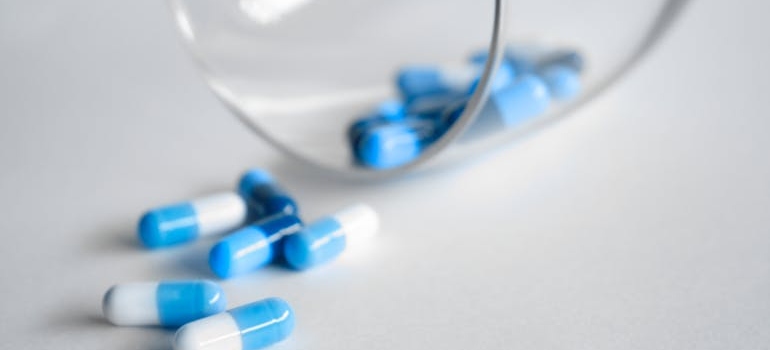Fentanyl is a super strong painkiller, and getting off it can be a real challenge. If you’re thinking about getting clean or know someone who needs to, it’s important to understand what you’re up against. This guide to detoxing from fentanyl will lay out what you need to know to start the journey toward recovery. The process can be tough, with some real challenges, but knowing what to expect can make all the difference. Let’s break it down into simple steps.
Understanding fentanyl addiction
Fentanyl is like a heavyweight drug that packs a serious punch. Using it messes with your brain’s feel-good chemicals, giving you a super strong high. Over time, your brain gets so used to these artificial highs that it starts needing fentanyl just to feel normal. This is how addiction sneaks up on you. It’s not just a craving; it’s your brain believing it can’t function without the drug. That’s why quitting fentanyl is so tough and why many people turn to professional help at fentanyl rehab centers. These centers are equipped to help manage the intense withdrawal symptoms and provide support for a full recovery. Fentanyl addiction is more than just a bad habit—it’s a physical and mental grip on your life that requires professional intervention to break.

Why You Need Medical Help to Detox from Fentanyl
Detoxing from fentanyl isn’t something to try on your own at home. It’s tough, and honestly, it can be dangerous. Fentanyl is extremely powerful, and your body can react in intense ways when you stop using it. Withdrawal can hit hard, with symptoms that are not only painful but also potentially life-threatening. This is where medical supervision becomes necessary. Doctors in a detox program can keep you safe, reduce withdrawal pains, and use strategies like Medication-Assisted Treatment (MAT) to help ease the process. Without professional help, the risks are high—you might face severe health complications or even overdose if you relapse because your body’s tolerance has changed. Getting clean from fentanyl is a big deal, and it’s safer with experts by your side.
Getting Ready for Fentanyl Detox
Before you jump into detoxing from fentanyl, there are some steps you should take to set yourself up for success. First, find a detox facility that has a good reputation. This matters because you want experts who know what they’re doing to help you through withdrawal. Check out rehabs in WV known for quality care. Next, get your head and heart ready. Detox is rough, not just physically but also emotionally and mentally. Understanding what to expect can help a lot, so maybe this guide to detoxing from fentanyl will provide you with a clearer picture. Preparing yourself mentally and choosing the right place for detox can make a huge difference in your journey toward getting clean.
What Happens During Fentanyl Detox?
When you start detoxing from fentanyl, the first thing that happens is an assessment and intake. This is where doctors check your health and drug use history to plan your detox. They need to understand exactly what you need to support you properly.
The detox itself has several stages
- Initial withdrawal phase – this starts within hours of your last dose and is when the cravings kick in hard and fast.
- Acute withdrawal phase – this is when you feel the worst of the withdrawal symptoms—things like pain, trouble sleeping, and intense mood swings.
- Post-acute withdrawal syndrome (PAWS), where symptoms linger and can suddenly pop up even weeks or months later.
Especially for younger folks, choosing a specialized drug rehab for young adults can help manage these stages with peers who understand what you’re going through.

What to Expect from Fentanyl Withdrawal Symptoms
Kicking fentanyl means your body and mind are going to protest – big time. Physically, you might feel muscle aches, get hit with waves of nausea, and sweat buckets. Psychologically, it’s a rollercoaster too, with anxiety, depression, and cravings all crashing the party.
These symptoms can start as soon as a few hours after your last dose, and the worst of it usually peaks around the third day. The intense phase can last a week, but don’t get too comfy; some symptoms can linger for weeks or months in Post-Acute Withdrawal Syndrome. Joining group therapy can offer support, as sharing your journey with others who are in the same boat can help you stay the course.

Medical Help in the Guide to Detoxing from Fentanyl
During fentanyl detox, doctors often use specific meds to make things easier. Buprenorphine, methadone, and clonidine are the go-tos. Buprenorphine and methadone help curb those tough cravings and ease withdrawal symptoms by mimicking some of the fentanyl’s effects without the high. This can make the withdrawal period less intense. Clonidine tackles some of the annoying parts of withdrawal, like anxiety, sweating, and muscle aches.
Using these medications means you can focus more on recovery without being overwhelmed by withdrawal. They are part of a medical approach to smooth out the bumpy road of detox, ensuring you can handle the process with less discomfort and a better chance of sticking to it. Remember, detoxing from fentanyl is a big step, and these meds are tools that help you take that step safely and with less pain.
How Supportive Therapies Boost Detox Success
Supportive therapies are key during detox because they handle more than just the physical symptoms of withdrawal. Counseling digs into the reasons behind your drug use and helps change harmful thinking patterns. Behavioral therapy focuses on your actions, teaching you how to replace bad habits with good ones. Then, there’s a holistic therapy for addiction, which covers things like yoga, meditation, and acupuncture. These aren’t just feel-good activities; they reduce stress and improve your overall mental health, which can make a huge difference in recovery.
These therapies aren’t a one-size-fits-all deal; they’re tailored to help you tackle your specific challenges during detox. They make sure you’re not just surviving without drugs, but learning how to live well and handle stress without falling back into old habits. Together, they build a strong foundation for a clean life post-detox.

Nutrition’s Role in Detox
Eating right isn’t just about keeping fit; it’s a big part of our guide to detoxing from fentanyl. Good nutrition helps your body heal from the damage drugs have done. It can ease withdrawal symptoms and boost your mood, making the whole detox process smoother. Here are some straightforward tips for maintaining a healthy diet during detox
- Drink plenty of water—it helps flush out toxins
- Load up on fruits and vegetables for vitamins and minerals
- Eat plenty of protein to repair your body
- Avoid sugar and caffeine, as they can mess with your energy levels and mood.
Remember, what you eat can make a big difference in how you feel and recover. Eating well is a simple way to give your body the support it needs to get clean.
How Hydration and Self-care Boost Your Detoxing from Fentanyl
Staying hydrated and taking care of yourself are big deals when you’re detoxing from fentanyl. Drinking plenty of water isn’t just about quenching thirst; it helps your body get rid of toxins faster and keeps your energy levels stable.
Simple self-care practices can also support your body during this tough time. Try to get enough sleep—your body heals itself while you rest. Stay active with gentle exercises like walking or stretching, which boost your mood and help reduce stress. Moreover, make time for activities you enjoy, whether that’s reading, listening to music, or watching your favorite shows.
All these steps are part of a bigger plan you can find in our guide to detoxing from fentanyl. They help your body and mind recover and can make your journey through detox a bit easier. Remember, taking care of yourself is part of getting better.
Ensuring Safety and Comfort in Detox Centers
Detox centers take safety and comfort seriously to help patients kick their habits. They create a secure space where everything is designed to make you feel at ease while your body clears out the drugs. These facilities have medical experts on hand 24/7 to monitor your health and respond to any emergencies. They use medications to ease withdrawal symptoms, making the process as painless as possible. Comfort also comes from the environment: rooms are designed to be calming and welcoming, not clinical and cold. Moreover, support goes beyond the physical. Emotional care is huge, which is why centers often include services like family therapy for addiction. This helps mend relationships and build support networks crucial for long-term recovery. A supportive and compassionate setting makes detox more bearable and boosts your chances of success.

How Emotional Support Fuels Your Journey through Detox
Detox isn’t just a physical battle; it’s a mental one too. Having strong emotional and psychological support is crucial during this time. It can make the difference between sticking with detox and falling back into old habits. Detox centers provide access to mental health resources to help you cope. Support groups are a big part of this, letting you connect with others who get what you’re going through. Hearing their stories and sharing your own can be powerful. Furthermore, therapy is another key resource. Facilities often offer individual therapy for addiction, which helps you tackle personal issues with a professional. This one-on-one support aims to get to the root of your addiction and develop strategies to stay clean. Getting through detox takes more than just toughing it out; it requires emotional healing, and that’s where these supports come into play.
Planning for Life After Detox
Aftercare planning is what keeps you on track after detox. It’s your game plan for staying clean and avoiding relapse. There are different types of aftercare programs to fit your life and recovery needs
- Inpatient rehab means staying at a facility with 24/7 support.
- Outpatient therapy lets you live at home while attending treatment sessions.
- Sober living homes offer a drug-free environment with others who are also staying clean.
Creating a comprehensive aftercare plan involves choosing the right mix of these options. It should also include ongoing support measures like support groups or individual counseling. Aftercare treatment is your safety net, helping you handle the challenges of everyday life without fentanyl. Moreover, effective aftercare planning addresses both immediate needs and long-term health, equipping you with tools and support for a drug-free future.
Real-life Victories in Detoxing from Fentanyl
Hearing from people who’ve successfully detoxed from fentanyl can inspire others to take that step. These personal stories often highlight the rough path of detox and the relief of recovery. Furthermore, many share their experiences about how professional detox made a huge difference. They talk about the tough days, the support from medical staff, and how treatment helped them manage withdrawal symptoms. These testimonials often emphasize that without professional help, they might not have made it. These stories can be found in resources like our guide to detoxing from fentanyl. They serve as real-world proof that while detox is hard, it’s possible and worthwhile. They also stress the importance of having a strong support system, whether it’s through family, friends, or support groups, to keep you on the path to recovery.

We’ve covered a lot in this guide—from understanding fentanyl addiction to the critical support needed during detox. Remember, detoxing from fentanyl is tough, but you don’t have to face it alone. Professional help can make a huge difference in managing withdrawal symptoms and preventing relapse.
Don’t hesitate to reach out for help. Recovery is definitely within reach when you have the right support and resources. Let this guide to detoxing from fentanyl be your first step toward a cleaner, healthier life. You’ve got this. There’s a whole network ready to support you on your journey to recovery.



